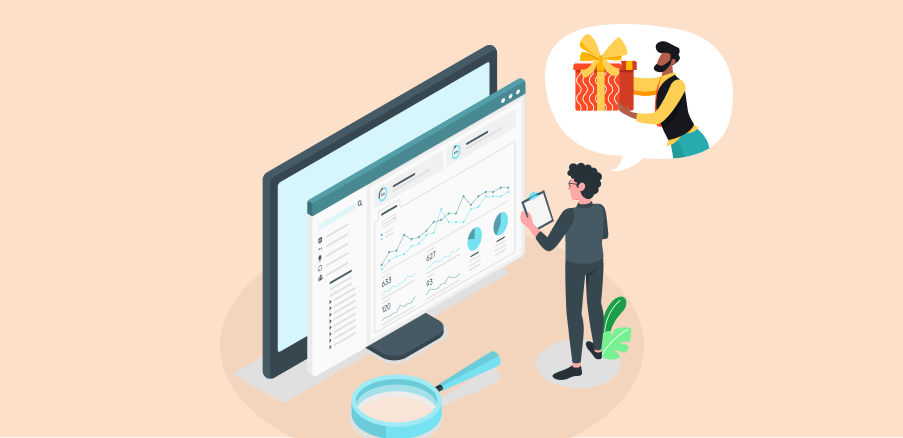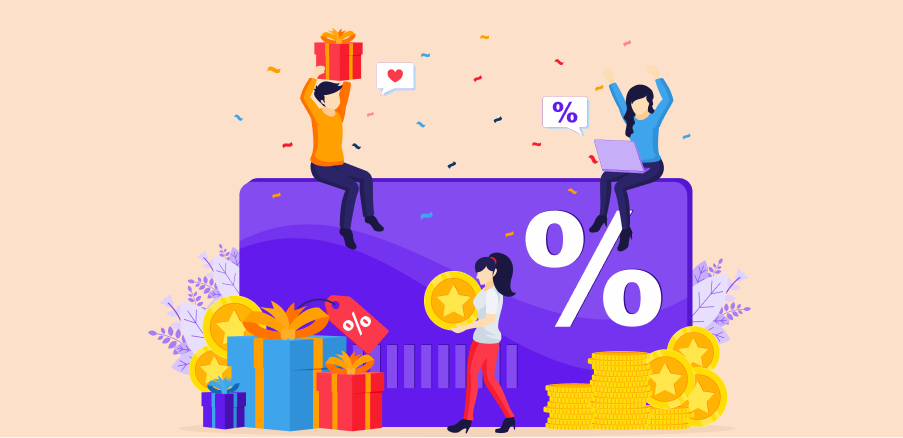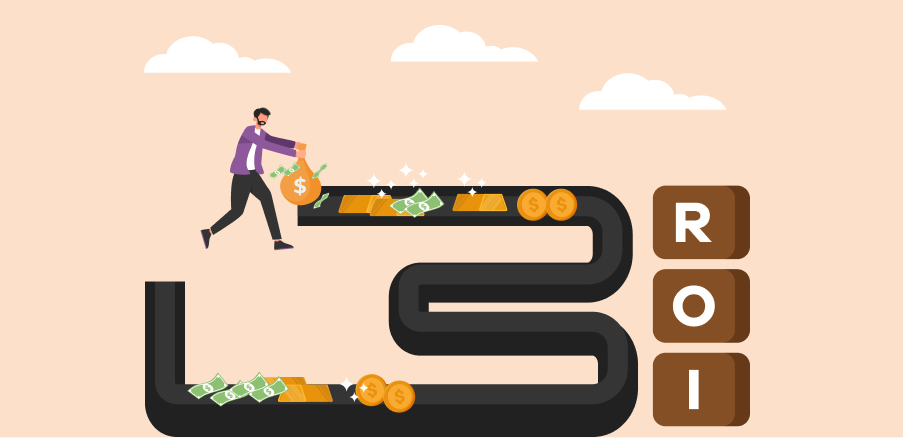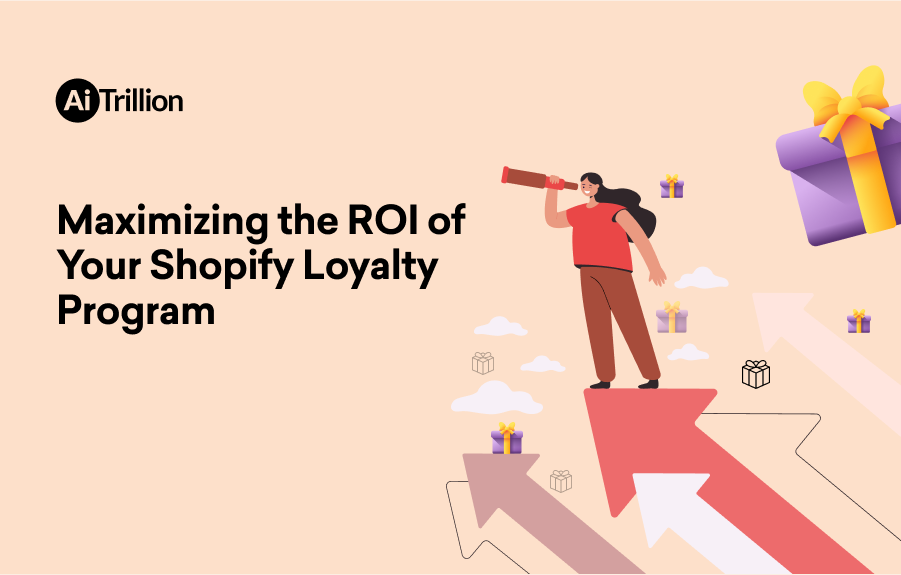To truly reap the benefits of a loyalty program, you need to design it with your customers in mind, incentivize the right behaviors, and track its effectiveness through data analysis. In this article, we’ll explore some strategies for maximizing the ROI of your Shopify loyalty program, including how to design your program, incentivize customer behavior, and measure its effectiveness through data analysis. Whether you’re just starting out or looking to improve an existing program, this article will provide valuable insights and practical tips for maximizing the effectiveness of your Shopify loyalty program.
- Reward Optimization: How to Choose and Adjust Rewards for Maximum ROI
- Data-Driven Decision Making: Using Analytics to Track and Optimize Your Loyalty Program
- Promotion Strategies: Techniques to Boost Loyalty Program Sign-Ups and Engagement
- Personalization Techniques: How to Tailor Rewards and Promotions to Drive ROI
- Referral Programs: Leveraging Word of Mouth to Boost Sales and ROI
- Gamification: How to Use Game Mechanics to Increase Engagement and ROI
- Program Simplification: Making Your Loyalty Program User-Friendly to Drive ROI
- Conclusion
Reward Optimization: How to Choose and Adjust Rewards for Maximum ROI
The first step in optimizing your Shopify loyalty program is to choose the right rewards to offer your customers. Rewards should be valuable and desirable, but also achievable and cost-effective for your business. You should also be willing to adjust and optimize your rewards over time based on customer feedback and data analysis.
Here are some tips for optimizing rewards in your loyalty program:
- Understand Your Customers: To choose the right rewards for your loyalty program, you need to understand your customers and what motivates them. Conduct market research, collect customer feedback, and analyze customer behavior to identify the rewards that are most likely to drive engagement and repeat business.
- Choose Rewards That Align With Your Brand: Your rewards should reflect the values and personality of your brand. Choose rewards that are consistent with your brand image and that your customers will find valuable and relevant.
- Create Tiered Rewards: To incentivize higher levels of engagement and spending, create tiered rewards that increase in value as customers move up the loyalty ladder. This can encourage customers to spend more and engage with your brand more frequently.
- Test and Adjust Rewards: Use data analysis to test the effectiveness of your rewards and adjust them as needed. Monitor customer behavior, track key metrics such as customer retention and repeat purchases, and adjust rewards to maximize engagement and ROI.
- Offer Non-Monetary Rewards: Not all rewards have to be monetary. Consider offering exclusive access to new products, early access to sales, or personalized shopping experiences as rewards for customer loyalty. These types of rewards can be just as effective as monetary rewards in driving engagement and repeat business.
- Communicate Rewards Effectively: Make sure customers understand the rewards available in your loyalty program and how to earn them. Use clear and concise language, and communicate rewards through multiple channels, such as email, social media, and in-store signage.
By optimizing rewards in your Shopify loyalty program, you can incentivize customer behavior, increase engagement, and drive repeat business. Whether you’re just starting out or looking to improve an existing program, these tips can help you choose and adjust rewards for maximum ROI.
Data-Driven Decision Making: Using Analytics to Track and Optimize Your Loyalty Program
Data analysis is a powerful tool for optimizing the ROI of your Shopify loyalty program. By tracking metrics such as participation rates, redemption rates, and customer lifetime value, you can identify areas where your program is succeeding and areas where it could be improved.
By analyzing data and tracking key metrics, you can identify areas for improvement, optimize rewards and incentives, and maximize the ROI of your loyalty program. Here are some tips for using analytics to track and optimize your loyalty program:
- Define Key Metrics: To track the effectiveness of your loyalty program, define key metrics that align with your business goals. Examples of key metrics include customer retention, repeat purchases, lifetime customer value, and referral rates.
- Use Analytics Tools: Use analytics tools such as Shopify’s analytics dashboard or Google Analytics to track key metrics and monitor customer behavior. These tools can provide valuable insights into customer engagement and help you identify areas for improvement.
- Segment Your Data: Segment your data by factors such as customer location, purchase history, and referral source to identify patterns and trends in customer behavior. This can help you optimize your rewards and incentives to better align with the needs and preferences of your customers.
- Conduct A/B Testing: Use A/B testing to test different variations of your loyalty program, such as different rewards or incentives. This can help you identify the most effective strategies for driving engagement and repeat business.
- Monitor Customer Feedback: Collect customer feedback through surveys, reviews, and social media to gain insights into customer satisfaction and identify areas for improvement in your loyalty program.
- Continuously Optimize Your Program: Use data analysis and customer feedback to continuously optimize your loyalty program. Adjust rewards, incentives, and program structure as needed to maximize engagement and ROI.
By using data-driven decision-making to track and optimize your Shopify loyalty program, you can identify areas for improvement and make strategic decisions that drive engagement and repeat business. Whether you’re just starting out or looking to improve an existing program, these tips can help you leverage data to create a more effective and engaging loyalty program that delivers results for your business.

Promotion Strategies: Techniques to Boost Loyalty Program Sign-Ups and Engagement
Promotion is crucial to the success of your Shopify loyalty program. If customers aren’t aware of your program or aren’t motivated to participate, it won’t deliver a high ROI.
By promoting your loyalty program effectively, you can increase customer awareness and drive participation, leading to higher engagement and repeat business. Here are some techniques to boost loyalty program sign-ups and engagement:
- Promote Your Program Across Multiple Channels: Use a variety of channels to promote your loyalty program, including your website, social media, email marketing, and in-store signage. This can help you reach a wider audience and increase awareness of your program.
- Offer an Incentive to Sign Up: Offer a reward or incentive for customers who sign up for your loyalty program. This can be a discount on their first purchase, bonus loyalty points, or access to exclusive content or products.
- Highlight the Benefits of Your Program: Clearly communicate the benefits of your loyalty program to customers, such as exclusive discounts, early access to sales, or personalized shopping experiences. This can help them understand the value of the program and increase their likelihood of participating.
- Create a Sense of Urgency: Use time-limited promotions or limited-time offers to create a sense of urgency and encourage customers to sign up for your loyalty program. This can also help drive engagement and repeat business.
- Leverage Social Proof: Use social proof, such as customer reviews or testimonials, to demonstrate the effectiveness and value of your loyalty program. This can help build trust with potential customers and increase their likelihood of signing up.
- Segment Your Promotions: Segment your promotions by customer behavior, purchase history, or demographics to better target your audience and increase the effectiveness of your promotions.
By using these promotion strategies, you can boost sign-ups and engagement in your Shopify loyalty program, leading to higher customer retention and repeat business. Whether you’re just starting out or looking to improve an existing program, these tips can help you effectively promote your loyalty program and increase customer engagement.
Personalization Techniques: How to Tailor Rewards and Promotions to Drive ROI
Personalization is a powerful way to increase engagement and ROI for your loyalty program. By tailoring rewards and promotions to each customer’s interests and behavior, you can increase the likelihood of participation and repeat purchases.
By using personalization techniques, you can better understand your customers and their behavior, and create more targeted and effective loyalty programs that drive engagement and repeat business. Here are some tips for personalizing rewards and promotions in your loyalty program:
- Use Customer Data to Inform Rewards: Use customer data, such as purchase history or browsing behavior, to inform the rewards and incentives you offer. This can help you tailor rewards to the needs and preferences of your customers, increasing the likelihood of engagement and repeat business.
- Create Segmented Promotions: Segment your promotions based on customer behavior or demographics to better target your audience and increase the effectiveness of your promotions. For example, you could offer personalized discounts or rewards to customers who have purchased a specific product category or who have a high lifetime value.
- Leverage Personalized Messaging: Use personalized messaging in your promotions and loyalty program communications to create a more engaging and personalized shopping experience. This can include using the customer’s name in emails or tailoring messaging to their purchase history or browsing behavior.
- Implement Personalized Recommendations: Use customer data to offer personalized product recommendations to customers based on their purchase history or browsing behavior. This can increase engagement and drive repeat business by providing customers with products they are more likely to be interested in.
- Offer Personalized Experiences: Offer personalized experiences as rewards in your loyalty program, such as personalized shopping experiences or early access to new products. This can create a more engaging and exclusive shopping experience for customers and increase their loyalty to your brand.
By using personalization techniques in your Shopify loyalty program, you can create more targeted and effective rewards and promotions that drive engagement and repeat business. Whether you’re just starting out or looking to improve an existing program, these tips can help you leverage customer data to create a more personalized and engaging loyalty program that delivers results for your business.

Referral Programs: Leveraging Word of Mouth to Boost Sales and ROI
Referral programs are a powerful way to increase engagement and ROI for your Shopify loyalty program. Referral programs drive new customer acquisition and increase customer loyalty. By incentivizing your customers to refer their friends and family to your store, you can tap into the power of word of mouth and grow your customer base. Here are some tips for leveraging referral programs to boost sales and ROI:
- Define Your Incentives: Define the incentives you will offer to customers who refer their friends and family to your store. These incentives can include discounts, store credit, or other rewards that incentivize customers to share your brand with others.
- Make It Easy to Refer: Make it easy for customers to refer their friends and family to your store by providing them with easy-to-use referral links or shareable content. This can increase the likelihood that they will refer others and help you track the effectiveness of your referral program.
- Promote Your Referral Program: Promote your referral program across multiple channels, including your website, social media, and email marketing. This can increase awareness of your program and encourage more customers to participate.
- Use Personalized Referral Messaging: Use personalized messaging in your referral program communications to create a more engaging and personalized experience for your customers. This can include using the customer’s name in emails or tailoring messaging to their purchase history or browsing behavior.
- Monitor and Optimize Your Program: Monitor the effectiveness of your referral program and use data analysis to optimize your incentives and messaging. Adjust your program as needed to maximize engagement and ROI.
By leveraging referral programs in your Shopify store, you can tap into the power of word of mouth to drive new customer acquisition and increase customer loyalty. Whether you’re just starting out or looking to improve an existing program, these tips can help you create an effective referral program that delivers results for your business.
Gamification: How to Use Game Mechanics to Increase Engagement and ROI
Gamification is the use of game mechanics in non-game contexts to drive engagement and motivate desired behaviors. By incorporating gamification elements into your loyalty program or marketing campaigns, you can create a more engaging and interactive experience for your customers, increasing their loyalty and driving sales. Here are some tips for using gamification to increase engagement and ROI:
- Define Your Objectives: Before incorporating gamification elements into your Shopify store, define your objectives and the desired behaviors you want to incentivize. This could be increasing customer engagement, driving repeat purchases, or increasing referrals.
- Choose Your Game Mechanics: Choose game mechanics that align with your objectives and resonate with your customers. This can include elements such as points, levels, badges, challenges, and leaderboards.
- Integrate Game Mechanics Into Your Loyalty Program: Integrate game mechanics into your loyalty program to increase engagement and incentivize desired behaviors. For example, you could offer bonus points for completing certain actions, such as sharing on social media or making a purchase.
- Use Game Mechanics in Your Marketing Campaigns: Use game mechanics in your marketing campaigns to increase customer engagement and drive sales. For example, you could offer a discount code to customers who complete a certain challenge, such as sharing a product on social media.
- Personalize the Experience: Use personalization techniques, such as offering personalized challenges or rewards, to create a more engaging and personalized experience for your customers. This can increase their loyalty and drive repeat business.
- Monitor and Optimize: Monitor the effectiveness of your gamification elements and use data analysis to optimize them. Adjust your game mechanics as needed to maximize engagement and ROI.
By incorporating gamification elements into your Shopify store, you can create a more engaging and interactive experience for your customers, increasing their loyalty and driving sales. Whether you’re just starting out or looking to improve an existing program, these tips can help you create an effective gamification strategy that delivers results for your business.

Program Simplification: Making Your Loyalty Program User-Friendly to Drive ROI
Loyalty programs can be a powerful tool for increasing customer retention and repeat business, but they can also be complicated and confusing for customers. By simplifying your loyalty program, you can create a more user-friendly experience for your customers, increasing their engagement and loyalty to your brand. Here are some tips for simplifying your loyalty program to drive ROI:
- Define Your Objectives: Before simplifying your loyalty program, define your objectives and the desired behaviors you want to incentivize. This could be increasing customer engagement, driving repeat purchases, or increasing referrals.
- Streamline Your Rewards: Streamline your rewards and incentives to make them more straightforward and user-friendly. Instead of offering a variety of different rewards, focus on a few key incentives that align with your objectives and resonate with your customers.
- Use Clear and Concise Language: Use clear and concise language in your loyalty program communications to make it easy for customers to understand how the program works and what rewards they can earn. Avoid using jargon or technical terms that might be confusing.
- Simplify the Redemption Process: Simplify the redemption process for rewards by making it easy for customers to redeem their points or rewards. Avoid complicated or time-consuming processes that might discourage customers from participating.
- Use Visuals and Icons: Use visuals and icons to make your loyalty program more visually appealing and user-friendly. This can include using icons to represent rewards or creating a visual dashboard that shows customers their progress toward earning rewards.
- Provide Customer Support: Provide customer support for your loyalty program to help customers navigate any questions or issues they might have. This can include offering a dedicated support email or chat function.
By simplifying your Shopify loyalty program, you can create a more user-friendly experience for your customers, increasing their engagement and loyalty to your brand. Whether you’re just starting out or looking to improve an existing program, these tips can help you create an effective and streamlined loyalty program that delivers results for your business.
Conclusion
In conclusion, there are various strategies you can use to maximize the ROI of your Shopify loyalty program. From reward optimization and personalization to gamification and program simplification, each strategy plays a crucial role in driving engagement and repeat business. By using data-driven decision-making, promoting your loyalty program effectively, and leveraging game mechanics and personalization techniques, you can create a more engaging and effective loyalty program that delivers results for your business. Whether you’re just starting out or looking to improve an existing program, these tips can help you create a loyalty program that drives ROI and builds long-term customer loyalty. Optimizing the ROI of your Shopify loyalty program requires careful consideration and ongoing effort.



Leave a Comment
You must be logged in to post a comment.